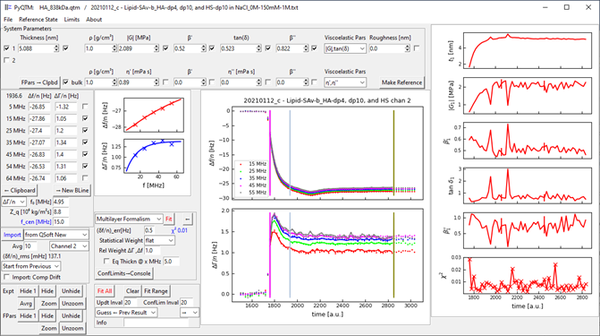The modern quartz crystal microbalances (also known as "QCM-D" for quartz crystal microbalance with dissipation monitoring) are now widely used. The interpretation of the data (shifts in frequency and half bandwidth, Δf and ΔΓ, on a series of harmonics) is still somewhat challenging.For planar layered systems, a standard model exists that predicts the values of Δf and ΔΓ (or also of Δf and ΔD with D the "dissipation factor") for a given geometry and given viscoelastic constants. The problem is inversion. It is often not trivial to derive statements about the sample from the data sets {Δf, ΔΓ}. Inversion is particularly difficult if the viscoelastic parameters depend on the frequency and if the investigated layer is in a liquid environment. Both are the case for many interesting samples (especially for the bioadsorbates).Inversion is difficult, but it is not always impossible. For planar films in air, robust statements are possible if the film thickness is between about 20 and 1000 nm. Models can also sometimes be fitted for films in liquids, although the requirements cannot be summarized in one sentence.
We have transferred our fit program to Python and made it available on the web.1,2 It is called PyQTM. The source code can be viewed. There is a detailed error analysis. Data files can be imported from different platforms. Fig. 1 shows the user interface. The algorithm, its performance and its limitations are described in [3].
Further links
[1] pyQTM Software (download)
[2] https://github.com/DJohannsmann/QCM-D-Modelling-PyQTM
[3] Johannsmann, D.; Langhoff, A.; Leppin, C.; Reviakine, I.; Maan, A. M. C., Effect of Noise on Determining Ultrathin-Film Parameters from QCM-D Data with the Viscoelastic Model. Sensors 2023, 23(3), 1348. doi.org/10.3390/s23031348
Here you can find documents on the behavior of complex samples on shear wave sonicators
tutorial
Slides:
Software:
- Python version (last update: 2024-09-22)
Literature:
